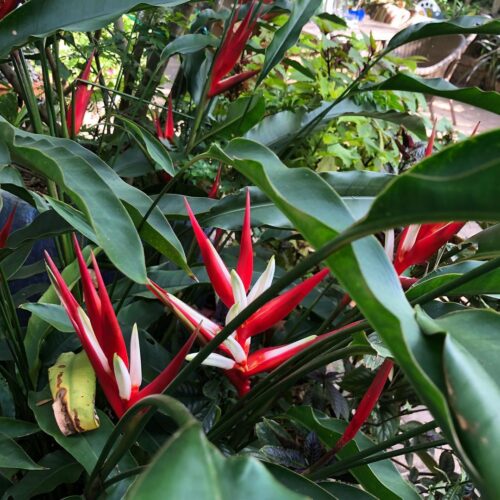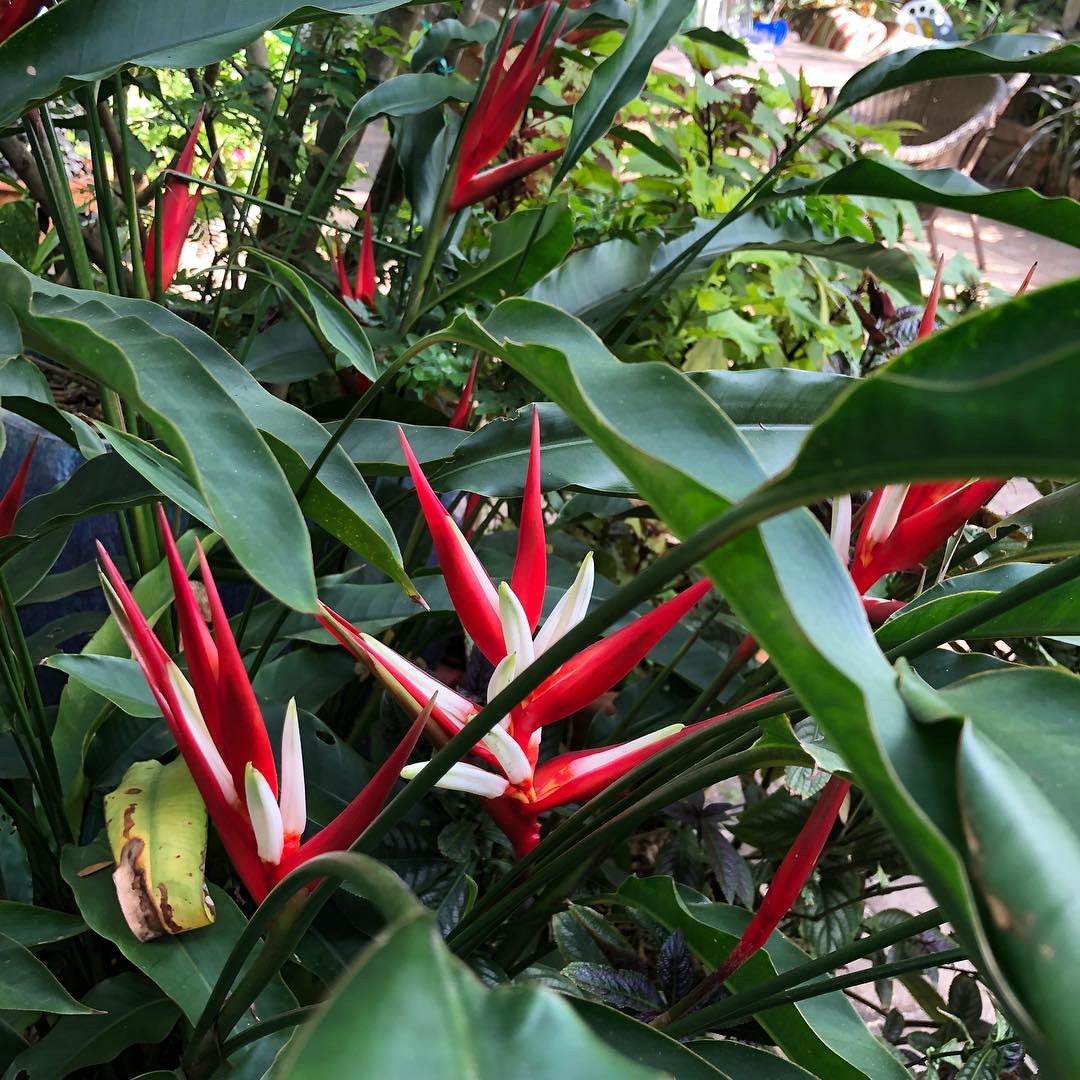Add a burst of festive cheer with bright tropical red blooms of Christmas heliconia to your home and garden.
Christmas Heliconia (Heliconia angusta) flowers in winter and brings a holiday vibe to your home and garden. The plant can reach up to 24-48 inches tall and 2-6 feet wide. Grow this festive plant in spring and fall in shaded beds and dappled light throughout the day. It appreciates warm temperatures and humid surroundings for producing blooms.
Gardeners living outside USDA zones 10-11 can keep this plant indoors in pots. As a houseplant, it stays gorgeous across the winter with pretty blooms. As a garden plant, place it in shaded garden beds in dappled light with warm temperatures for lovely blossoms.
Heliconia plants are great for hummingbird gardens. In fact, hummingbirds are the only birds that pollinate them. So, attracting these birds with the bright flowers is very important for the survival of heliconia.
USDA Zones: 10-11
Propagating Christmas Heliconia
If you are in rush to Christmas Heliconia then buy transplants. The common heliconia plant varieties are Heliconia angusta ‘Yellow Christmas’, Heliconia angusta ‘Red Christmas,’ Heliconia angusta ‘Red Holiday’.
You can propagate Christmas Heliconia through division. This ensures that the new plant closely resembles the parent plant. Propagation works well in warm and humid conditions. Lift the plant carefully from the soil and gently remove the excess dirt. Cut each rhizome apart to make new plants. Plant the divisions immediately in pots or beds.
Ideal Growing Conditions for Christmas Heliconia

Light
Place the indoor plant in an area with bright, indirect light. Outdoor plants can handle some direct sunlight. Keep the potted plants near a window, but avoid direct sunlight.
Soil
Use nutrient-rich soil for planting Christmas heliconia. You can make this kind of soil by using finished compost and amendments while planting. For pots, add bone meal and worm castings for good growth.
Water
Water the plant frequently to balance moisture in hot climates and for potted plants. You have to water the plant weekly or more if necessary. For outdoor plants, use soaker hoses or drip irrigation.
Temperature and Humidity
Ensure the heliconia is kept in a constantly warm area above 60 F (15 C). This will encourage growth and won’t stress the plant.
Heliconia prefers high humidity; approximately 60-80 percent will be acceptable. Mist the plant or keep the plant on water tray with pebbles.
Christmas Heliconia Care
Fertilizer
Christmas Heliconia is a heavy feeder. In the growing season, apply a balanced fertilizer with an NPK ratio of 3-1-2 or 4-4-6. You can also use a slow-release fertilizer with an NPK ratio of 2-1-2, as per the package instructions.
Overwintering
If you live where heliconias can’t survive the winter, one of the best ways to keep them safe is to bring them indoors. This is usually done in late summer or early fall when the weather starts to get cooler. Place the plants near a window that faces east or south so they get plenty of indirect sunlight. If you have heliconias growing in the garden, you can also help protect them by adding mulch or using other methods to extend their growing season.
Deadheading
You can trim them to keep them the size and shape you want. This helps them grow better, look neat, and may even stop diseases. Cutting off the old stems after the flowers have faded is also helpful.
Pests and Diseases
Christmas Heliconia doesn’t usually have many issues with bugs or diseases. However, it is still good to keep an eye on the plant to catch any problems early. Watch for signs of infection. Common issues with heliconia include curled leaves, brown spots, and some fungal diseases.



